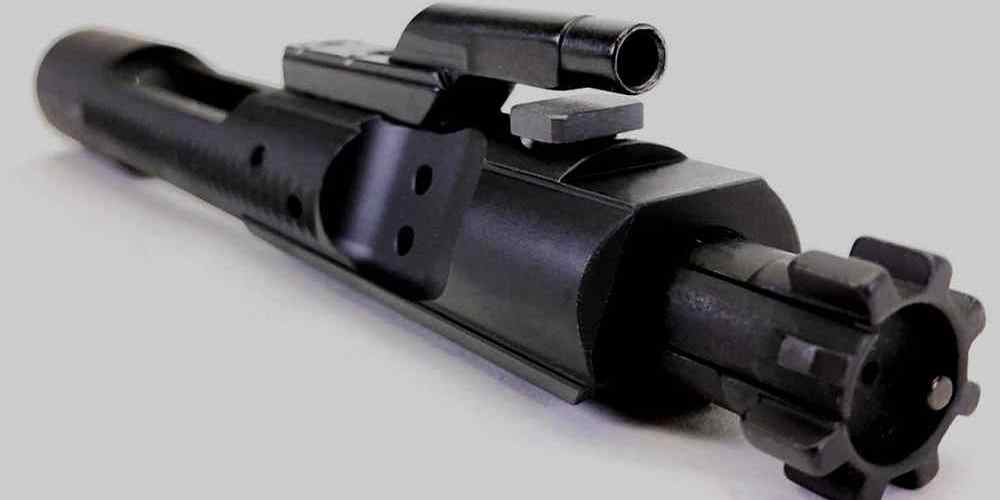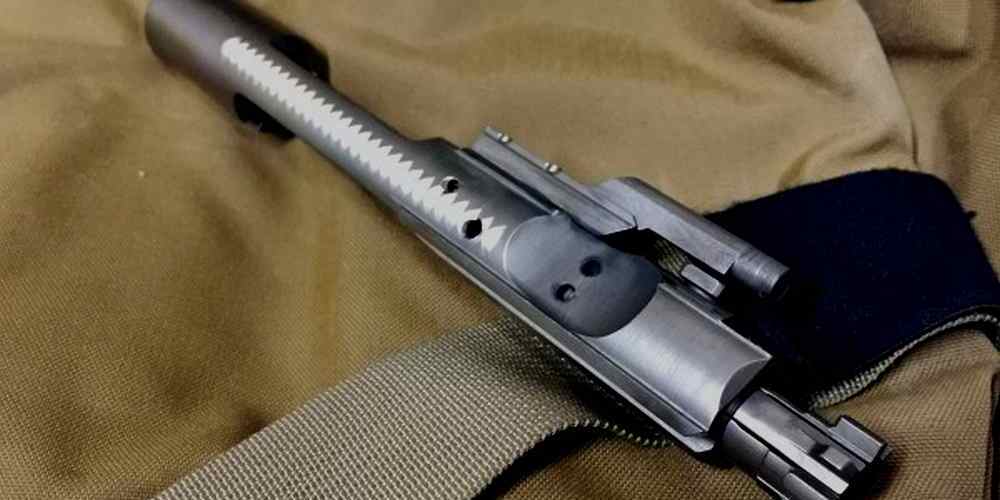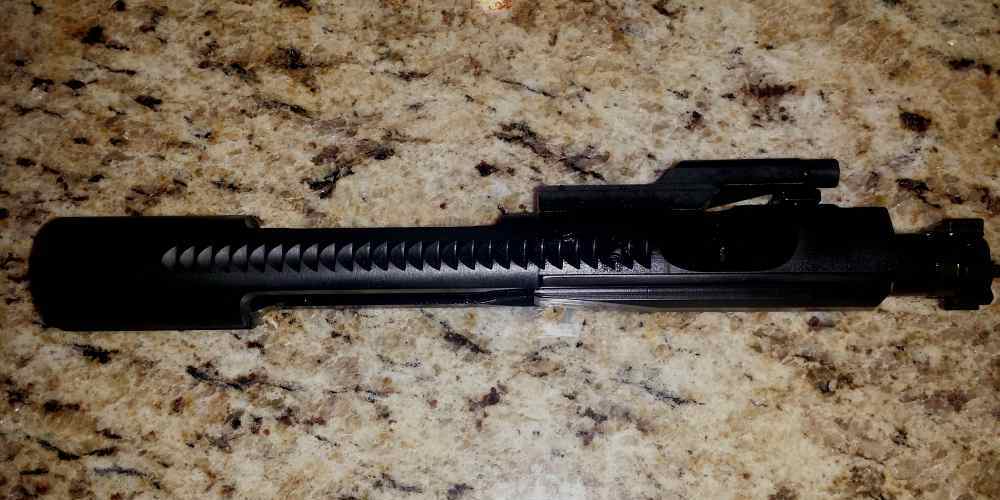“Lightweight BCGs: Enhancing performance or compromising reliability?”
Benefits of Lightweight BCGs in AR15 Rifles
When it comes to upgrading your AR15 rifle, one of the components that often gets a lot of attention is the bolt carrier group (BCG). The BCG is a critical part of the rifle’s operation, responsible for cycling the action and chambering new rounds. In recent years, lightweight BCGs have become increasingly popular among AR15 enthusiasts. These BCGs are designed to reduce the overall weight of the rifle, which can have a number of benefits. In this article, we will explore the pros and cons of using lightweight BCGs in AR15 rifles.
One of the biggest advantages of using a lightweight BCG is the reduction in overall weight. By replacing the standard BCG with a lighter one, you can make your rifle easier to carry and handle. This can be especially beneficial for those who use their AR15 for hunting or competition shooting, where every ounce counts. A lighter rifle can also be easier to maneuver in tight spaces, making it more versatile in a variety of shooting scenarios.
Another benefit of using a lightweight BCG is the potential for increased reliability. Some shooters believe that a lighter BCG can cycle faster and more smoothly, leading to improved performance. This can be particularly important in high-stress situations where quick and reliable cycling is essential. Additionally, a lighter BCG can put less strain on the rifle’s internal components, potentially extending the overall lifespan of the gun.
In addition to the performance benefits, lightweight BCGs can also have a positive impact on recoil. By reducing the weight of the reciprocating mass, a lightweight BCG can help to mitigate felt recoil, making the rifle more comfortable to shoot. This can be especially beneficial for those who are sensitive to recoil or who shoot for extended periods of time. A lighter rifle can also be easier to control during rapid fire, allowing for more accurate and consistent shooting.
Despite these benefits, there are some potential drawbacks to using a lightweight BCG in an AR15 rifle. One of the main concerns is durability. Some shooters worry that a lighter BCG may not be as robust as a standard BCG, leading to potential reliability issues over time. While this is a valid concern, many manufacturers have developed lightweight BCGs that are just as durable and reliable as their heavier counterparts. It is important to do your research and choose a reputable manufacturer when selecting a lightweight BCG for your rifle.
Another potential downside to using a lightweight BCG is cost. Lightweight BCGs are often more expensive than standard BCGs, due to the additional machining and materials required to reduce weight. This can be a significant factor for budget-conscious shooters who may not see the added benefits of a lightweight BCG as worth the extra cost. However, for those who prioritize performance and handling, the investment in a lightweight BCG may be well worth it.
In conclusion, lightweight BCGs can offer a number of benefits for AR15 shooters, including reduced weight, improved performance, and decreased recoil. However, there are also potential drawbacks to consider, such as durability and cost. Ultimately, the decision to use a lightweight BCG in your AR15 rifle will depend on your individual preferences and shooting needs. It is important to weigh the pros and cons carefully before making a decision, and to choose a high-quality lightweight BCG from a reputable manufacturer.
Drawbacks of Lightweight BCGs in AR15 Rifles
When it comes to upgrading your AR15 rifle, one of the options you may consider is swapping out the bolt carrier group (BCG) for a lightweight version. Lightweight BCGs have become increasingly popular among gun enthusiasts for their potential benefits, such as reduced recoil and faster cycling. However, like any modification, there are also drawbacks to using a lightweight BCG in your AR15 rifle.

One of the main drawbacks of lightweight BCGs is their potential impact on reliability. The reduced weight of the BCG can lead to a decrease in the amount of force exerted on the bolt during cycling. This can result in a higher likelihood of malfunctions, such as failures to extract or eject spent casings. In a self-defense or tactical situation, reliability is paramount, and any decrease in this area could be a serious concern.
Another drawback of lightweight BCGs is their potential impact on durability. The reduced weight of the BCG means that it may not be as robust as a standard BCG. This could lead to increased wear and tear on the components, potentially shortening the lifespan of the BCG. Additionally, the lighter weight may also make the BCG more prone to damage from high-pressure rounds or rapid firing.
In addition to reliability and durability concerns, lightweight BCGs may also have an impact on accuracy. The reduced weight of the BCG can affect the balance of the rifle, potentially leading to increased muzzle rise and decreased overall stability. This could result in decreased accuracy, especially during rapid or sustained fire.
Furthermore, lightweight BCGs may also have an impact on felt recoil. While many shooters believe that a lighter BCG will result in reduced recoil, this is not always the case. The reduced weight of the BCG can actually lead to increased felt recoil, as there is less mass to absorb the energy of the recoil impulse. This can make shooting the rifle more uncomfortable and less controllable, especially for newer or less experienced shooters.
Despite these drawbacks, there are some potential benefits to using a lightweight BCG in your AR15 rifle. For example, the reduced weight of the BCG can lead to faster cycling and increased rate of fire. This can be advantageous in competitive shooting or other situations where rapid follow-up shots are necessary.
Additionally, the reduced weight of the BCG can also lead to a decrease in overall rifle weight. This can be beneficial for shooters who are looking to reduce the overall weight of their rifle for easier handling or carrying over long distances. However, it is important to consider the trade-offs between weight reduction and potential drawbacks in reliability, durability, accuracy, and felt recoil.
In conclusion, while lightweight BCGs may offer some potential benefits, such as faster cycling and reduced overall rifle weight, there are also drawbacks to consider. These include potential impacts on reliability, durability, accuracy, and felt recoil. Before making any modifications to your AR15 rifle, it is important to carefully weigh the pros and cons of using a lightweight BCG and consider how it may affect the performance of your rifle in different shooting scenarios.
Performance Comparison of Lightweight vs Standard BCGs
When it comes to upgrading your AR15 rifle, one of the components that often gets attention is the bolt carrier group (BCG). The BCG is a crucial part of the rifle’s operation, responsible for cycling rounds and ensuring reliable performance. In recent years, lightweight BCGs have gained popularity among AR15 enthusiasts for their potential benefits in terms of reduced recoil and faster cycling. However, like any modification, there are both pros and cons to consider when deciding whether to switch to a lightweight BCG.
Let’s start by looking at the pros of using a lightweight BCG in your AR15 rifle. One of the most significant advantages is the reduction in felt recoil. By reducing the weight of the BCG, the rifle’s overall recoil impulse is lessened, making it easier to stay on target and shoot more accurately. This can be especially beneficial for competitive shooters or those who engage in rapid-fire scenarios where quick follow-up shots are crucial.
Another advantage of lightweight BCGs is the potential for faster cycling. With less mass to move, the BCG can cycle more quickly, leading to faster follow-up shots and potentially improved overall performance. This can be particularly advantageous in situations where speed is of the essence, such as in competitive shooting or tactical applications.
In addition to the performance benefits, lightweight BCGs can also help reduce the overall weight of the rifle. This can be appealing to those who value a lighter, more maneuverable firearm, whether for hunting, competition, or general shooting purposes. A lighter rifle can be easier to carry for extended periods and may be more comfortable to shoot, especially for those with smaller frames or less upper body strength.
However, despite these potential advantages, there are also some drawbacks to consider when using a lightweight BCG in your AR15 rifle. One of the main concerns is durability. Lightweight BCGs are often made from materials like aluminum or titanium, which may not be as robust as the standard steel used in traditional BCGs. This can lead to increased wear and potential reliability issues over time, especially with high round counts or heavy use.
Another potential downside of lightweight BCGs is increased sensitivity to fouling and debris. With less mass to absorb energy, lightweight BCGs may be more prone to malfunctions caused by dirt, carbon buildup, or other contaminants. This can be a significant concern for those who rely on their rifles for self-defense or other critical applications where reliability is paramount.
In conclusion, the decision to switch to a lightweight BCG in your AR15 rifle is a personal one that should be based on your specific needs and preferences. While there are clear performance benefits to be gained, such as reduced recoil and faster cycling, there are also potential drawbacks to consider, including durability and reliability concerns. Ultimately, it’s essential to weigh the pros and cons carefully and make an informed decision based on your individual shooting style and requirements.
Factors to Consider Before Choosing a Lightweight BCG
When it comes to upgrading your AR15 rifle, one of the components that often gets attention is the bolt carrier group (BCG). The BCG plays a crucial role in the functioning of the rifle, as it is responsible for cycling the rounds and ensuring smooth operation. One option that has gained popularity in recent years is the lightweight BCG. While there are certainly benefits to using a lightweight BCG, there are also some drawbacks to consider before making the switch.
One of the main advantages of a lightweight BCG is the reduction in felt recoil. By reducing the weight of the BCG, the rifle is able to cycle faster, which can lead to less perceived recoil. This can be especially beneficial for those who are looking to improve their accuracy and follow-up shots. Additionally, a lighter BCG can also help to reduce the overall weight of the rifle, making it more comfortable to carry and maneuver.
Another benefit of a lightweight BCG is the potential for increased reliability. A lighter BCG can cycle more quickly, which can help to prevent malfunctions such as failures to extract or eject. This can be particularly important for those who use their rifles in high-stress situations, such as competition shooting or self-defense scenarios. Additionally, a lighter BCG can also help to reduce wear and tear on the rifle, as there is less mass moving back and forth with each shot.
However, there are also some drawbacks to using a lightweight BCG that should be taken into consideration. One of the main concerns is the potential for increased wear on the rifle. A lighter BCG can cycle more quickly, which can put added stress on the components of the rifle. This can lead to increased wear on parts such as the buffer spring and gas key, which may need to be replaced more frequently.
Another potential drawback of a lightweight BCG is the reduced mass for cycling. While a lighter BCG can cycle more quickly, it may not have enough mass to reliably cycle certain types of ammunition. This can lead to malfunctions such as failures to feed or failures to eject, which can be frustrating for the shooter. Additionally, a lighter BCG may also have a shorter lifespan than a standard BCG, as the components may wear out more quickly due to the increased stress of cycling.
In conclusion, there are both pros and cons to using a lightweight BCG in an AR15 rifle. While a lighter BCG can help to reduce felt recoil, increase reliability, and decrease overall weight, it may also lead to increased wear on the rifle and potential cycling issues. Before making the switch to a lightweight BCG, it is important to carefully consider these factors and determine whether the benefits outweigh the drawbacks for your specific shooting needs. Ultimately, the decision to use a lightweight BCG will depend on your personal preferences and shooting style.
User Experiences with Lightweight BCGs in AR15 Rifles
When it comes to upgrading your AR15 rifle, one of the components that often gets attention is the bolt carrier group (BCG). The BCG is a crucial part of the rifle’s operation, responsible for cycling rounds and ensuring smooth functioning. In recent years, lightweight BCGs have gained popularity among AR15 enthusiasts for their potential benefits. However, like any modification, there are pros and cons to consider before making the switch.
One of the main advantages of using a lightweight BCG in your AR15 rifle is reduced felt recoil. By reducing the weight of the BCG, the rifle’s overall recoil impulse can be lessened, making it easier to stay on target during rapid fire. This can be especially beneficial for competitive shooters or those looking to improve their accuracy and follow-up shots.
Another benefit of a lightweight BCG is faster cycling speeds. With less mass to move, the BCG can cycle rounds more quickly, potentially leading to faster follow-up shots and improved overall performance. This can be particularly advantageous in situations where speed is crucial, such as in competitive shooting or self-defense scenarios.
Additionally, a lightweight BCG can help reduce the overall weight of the rifle, making it more comfortable to carry and maneuver for extended periods. This can be especially important for hunters or those who need to carry their rifle for long distances.
However, there are also some drawbacks to using a lightweight BCG in an AR15 rifle. One of the main concerns is reliability. Some users have reported issues with lightweight BCGs not cycling properly or causing malfunctions, especially when using certain types of ammunition or in adverse conditions. It’s important to thoroughly test any modifications to ensure they are reliable and function properly before relying on them in a critical situation.
Another potential downside of a lightweight BCG is increased wear and tear on the rifle. With less mass to absorb the energy of each shot, the BCG may experience more stress and wear over time, potentially leading to a shorter lifespan for the component. Regular maintenance and inspection are crucial to ensure the BCG is functioning properly and to catch any potential issues before they become serious.
In conclusion, lightweight BCGs can offer some significant benefits for AR15 rifle owners, including reduced felt recoil, faster cycling speeds, and decreased overall weight. However, it’s important to weigh these advantages against the potential drawbacks, such as reliability issues and increased wear and tear. Ultimately, the decision to switch to a lightweight BCG should be based on your individual needs and preferences, as well as thorough testing and evaluation of the modification. By carefully considering the pros and cons, you can make an informed decision about whether a lightweight BCG is the right choice for your AR15 rifle.







